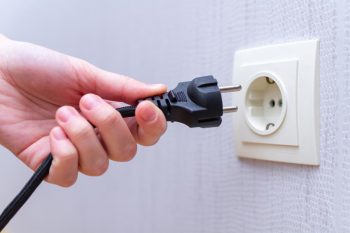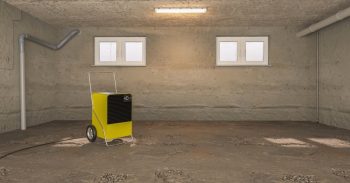
Moving a mini-split air conditioner is a task that requires careful planning and execution. It’s not as simple as unplugging the unit and moving it to a new location. This process involves handling refrigerant, disconnecting and reconnecting electrical connections, and ensuring the unit’s correct installation. This comprehensive guide provides an in-depth look at how to move a mini split air conditioner.
Moving a mini-split air conditioner involves turning off the power supply, hiring professionals to handle the refrigerant, carefully disconnecting the unit, and selecting an appropriate new location. The units should be carefully disassembled, kept level, and allowed to rest during the move. Upon reinstallation, the refrigerant lines and electrical wiring are reconnected, the system is checked for leaks and charged, and then tested for proper function. Regular maintenance and inspections should follow to ensure efficient operation. It’s a complex task best left to professionals.
What is a Mini-Split Air Conditioner?
A mini-split air conditioner, also known as a ductless air conditioner, is a heating and cooling system that allows you to control the temperatures in individual rooms or spaces without the need for ductwork. It consists of two main components: an outdoor compressor/condenser unit and an indoor air-handling unit. These units are connected by a conduit that houses the power cable, refrigerant tubing, suction tubing, and a condensate drain.
Pre-Move Preparations
Before moving a mini split air conditioner, there are several preliminary steps to consider:
- Ensure the power supply to the mini-split system’s components is turned off. This includes the condenser and the indoor air-handling units.
- Hire a professional to handle the relocation process. They have the necessary expertise and equipment to safely and efficiently move the system.
- The technician will begin by removing any leftover refrigerant from the mini-split system and pumping it into either the compressor or the condenser.
- Select an appropriate spot for the indoor unit, away from direct sunlight and heat sources. The unit should be mounted 7 feet (2.1 m) off the floor and have at least 6-12 inches of clearance on all sides.
- Ensure the outdoor unit (condenser) has a suitable location with proper ventilation and clearance from obstructions.
Tools and Equipment Needed
The following tools and equipment are necessary to safely move a mini split air conditioner:
- Adjustable wrench
- Drill/driver
- Hole saw
- Level
- Condenser wall brackets
- Plastic condenser pad
- Plastic line set cover kit
- Hand tools (e.g., screwdrivers and wire strippers)
- Copper cutters
- Refrigerant gauges
- Vacuum pump
Disconnecting the Mini-Split Air Conditioner
To safely disconnect a mini-split air conditioner from its current location, follow these steps:
- Turn off the power
- Disconnect the electrical wiring
- Close the refrigerant valves
- Disconnect the refrigerant lines
- Remove the indoor unit
- Remove the outdoor unit
- Patch the hole (if necessary)
Protecting the Mini-Split Air Conditioner during the Move
To protect your mini-split air conditioner during the move:
- Turn off the power supply
- Hire professionals
- Remove refrigerant
- Disassemble carefully
- Keep the unit level
- Drain water
- Avoid placing the unit on its side or upside down
- Allow the unit to rest
Reinstalling the Mini-Split Air Conditioner
To reinstall a mini-split air conditioner at a new location, follow these steps:
- Plan the new location
- Disconnect and remove the indoor unit
- Disconnect and remove the outdoor unit
- Install the indoor unit at the new location
- Install the outdoor unit at the new location
- Connect the refrigerant lines
- Connect the electrical wiring
- Check for leaks and charge the system
- Test the system
Ensuring Proper Functioning After the Move
To ensure your mini-split air conditioner is functioning properly after a move, follow these steps:
- Check the installation
- Inspect the refrigerant levels
- Examine the outdoor unit
- Clean or replace the air filters
- Clean the evaporator and condenser coils
- Test the system
- Consult a professional
By following these steps and performing regular maintenance, you can ensure that your mini-split air conditioner functions efficiently and effectively after a move.
Remember, moving a mini-split air conditioner is a complex task that should be handled by professionals. However, understanding the process can help you ensure that the job is done right, and your system continues to provide comfortable temperatures for your home.
Frequently Asked Questions
How long should I let the unit rest after moving it?
After moving the mini-split air conditioner, it’s recommended to let the unit rest for at least 24 hours before turning it on. This allows any refrigerant that may have moved around during the transport to settle back down.
Can I move a mini-split air conditioner by myself?
Moving a mini-split air conditioner involves handling refrigerant, disconnecting and reconnecting electrical connections, and ensuring the unit’s correct installation. These are complex tasks that require professional skills and equipment. Hence, it’s not recommended to do it by yourself.
How often should I clean or replace the air filters of my mini-split air conditioner?
The air filters of your mini-split air conditioner should be cleaned every month and replaced every two to three months, or as recommended by the manufacturer. Regular cleaning and replacement of air filters can help maintain the efficiency of your system and improve indoor air quality.
What is the ideal location for installing the outdoor unit of a mini-split air conditioner?
The outdoor unit (condenser) should be installed in a location that has proper ventilation and clearance from obstructions. It should also be away from heat sources and direct sunlight.
What happens if I place the unit on its side or upside down during the move?
Placing the unit on its side or upside down during the move can cause the oil to flow into the cooling circuit. It can take a long time for the oil to return to the compressor, and this can damage the compressor. Therefore, it’s essential to keep the unit level during the move.












